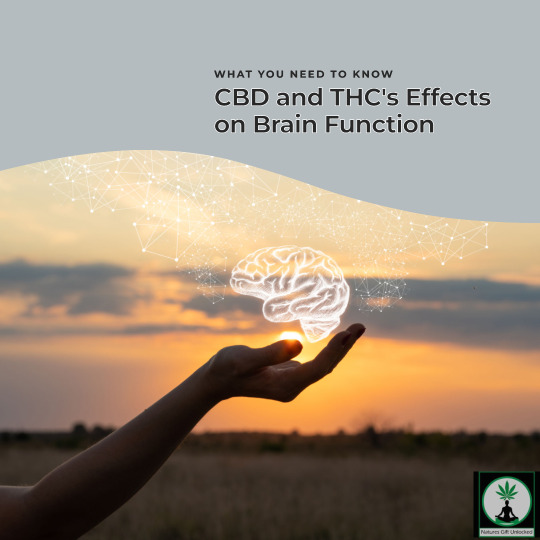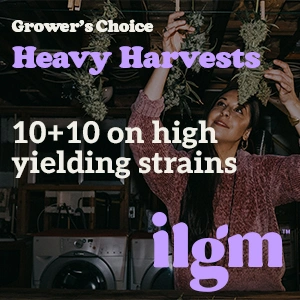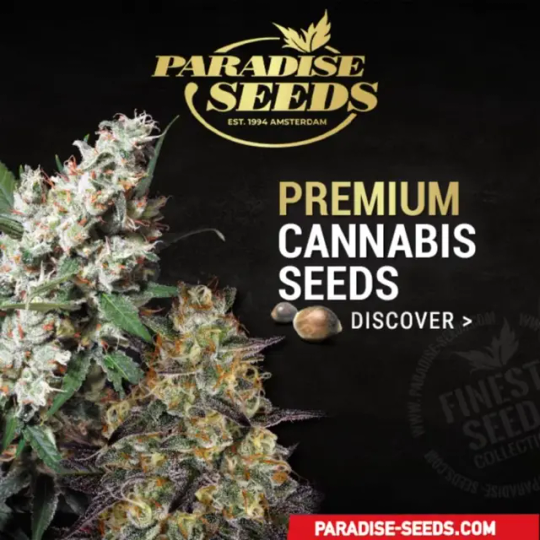#cannabiscompounds
Explore tagged Tumblr posts
Text

Exploring the Effects of CBD and THC on the Brain: Unveiling Potential Benefits
CBD (cannabidiol) and THC (tetrahydrocannabinol) are two prominent compounds found in cannabis plants. These compounds interact with the brain's endocannabinoid system, influencing various physiological processes. Understanding their effects on the brain can provide insights into their potential benefits. Let's explore the impact of CBD and THC on the brain and the advantages they offer.
Benefits of CBD and THC on the Brain:
Pain Relief: Both CBD and THC have analgesic properties that can help alleviate chronic pain.
Anxiety and Stress Reduction: CBD has shown potential in reducing anxiety and stress levels, promoting a sense of calmness.
Neuroprotective Effects: CBD and THC may have neuroprotective properties, potentially benefiting individuals with neurological disorders.
Sleep Improvement: CBD has been associated with improved sleep quality and may help manage sleep disorders.
Anti-Inflammatory Effects: Both CBD and THC exhibit anti-inflammatory properties, which can be beneficial for conditions involving inflammation.
Learn more about the effects of CBD and THC on the brain and discover their potential benefits for your overall well-being.

#CBDandTHC#BrainEffects#CannabisCompounds#NeurologicalHealth#PainRelief#AnxietyReduction#SleepImprovement#NeuroprotectiveProperties#AntiInflammatoryEffects#WellnessBenefits
3 notes
·
View notes
Text
What Are Cannabis Alkaloids? Their Role, Benefits, and Untapped Potential



Unlocking the Secrets of Cannabis Alkaloids: A Hidden Chemical Powerhouse
THC and CBD may dominate the spotlight, but hidden within cannabis is another class of compounds with untapped potential—alkaloids.Could these lesser-known chemicals be the key to unlocking new therapeutic and recreational benefits?Understanding cannabis alkaloids could lead to groundbreaking discoveries in medical and recreational cannabis use.What Are Alkaloids in Plants?Alkaloids are nitrogen-containing compounds naturally produced by plants and fungi.These compounds serve various biological functions, such as deterring herbivores, aiding reproduction, and protecting plants from environmental threats.Many alkaloids have powerful effects on the human body and have been used in medicine, recreation, and spirituality for centuries.Common Alkaloids in Other PlantsTo understand the significance of alkaloids, let’s look at a few well-known examples: Alkaloid Found In Effects Caffeine Coffee, Tea Enhances alertness & energy Morphine Poppies Potent pain-relieving opioid Nicotine Tobacco Addictive stimulant affecting mood & cognition Psilocybin Magic Mushrooms Alters perception & mood If these alkaloids can exert such profound effects, could cannabis alkaloids hold similar potential? Why Does Cannabis Produce Alkaloids?Although cannabis alkaloids remain understudied, we can make informed speculations about their purpose by examining alkaloid production in other plants. These compounds likely serve multiple functions essential to the plant’s survival and adaptation:- Defense Against Predators: Alkaloids deter herbivores by making plants taste bitter or, in some cases, toxic. This defense mechanism protects cannabis from insects, animals, and other threats. - Protection Against Environmental Stress: Extreme temperatures, droughts, and nutrient deficiencies pose significant challenges to plant survival. Alkaloids may act as biochemical shields, helping cannabis withstand harsh environmental conditions. - Competitive Advantage (Allelopathy): Some plants use alkaloids to suppress the growth of neighboring plants, giving them a competitive edge in their ecosystem. - Enhancing Reproductive Success: Alkaloids might play a role in attracting beneficial pollinators or deterring harmful ones, increasing the likelihood of successful reproduction.By exploring these potential roles, researchers can better understand why cannabis evolved to produce alkaloids and how they might contribute to the plant’s effects.Alkaloids Found in CannabisWhile cannabinoids and terpenes dominate cannabis research, scientists have also identified several alkaloids in the plant. These compounds may play a crucial role in cannabis’ biological functions and potential effects.1. Cannabisativine:Cannabisativine is a pyrrolidine-based alkaloid believed to aid in plant defense against pests and pathogens. It may also serve as a nutrient reservoir, helping the plant manage essential compounds for growth and survival. Although little is known about its effects on humans, its presence highlights cannabis' biochemical diversity.2. Cannabimines (A, B, C, and D):Cannabimines exhibit unique molecular structures that may contribute to the plant’s stress tolerance and defensive mechanisms. Some researchers speculate that cannabimines might interact with human receptors or enzymes, potentially influencing physiological responses, though scientific research is still in its early stages.3. Cannabinine:Cannabinine has been studied for its potential effects on the human nervous system, with researchers investigating its interaction with neurotransmitter pathways.Early studies suggest it may have pharmacological effects, but further research is needed to confirm its role in cannabis' overall impact.4. Tetanocannabin:Tetanocannabin helps the plant withstand environmental stressors like extreme temperatures and soil conditions.Scientists are particularly interested in whether this compound can interact with human neurotransmitters, influencing mood, perception, or other physiological functions.


Can Alkaloids Enhance the Entourage Effect?The entourage effect refers to the combined impact of all active compounds in cannabis working together.Ever wondered why different strains of cannabis have different effects? It’s due to their unique ratios of cannabinoids, terpenes, flavonoids, and, potentially, alkaloids.While there is no direct evidence linking alkaloids to the entourage effect, their potential role cannot be dismissed. Alkaloids may influence cannabinoid activity or interact with relevant receptors, modulating mood, perception, and other effects.These interactions could complement cannabinoids and terpenes, enhancing the overall experience—or not.Future research will determine whether alkaloids are an integral part of this synergy.Potential Benefits of Cannabis AlkaloidsResearch into cannabis alkaloids is still emerging, but they may offer several benefits:- Pain Relief: Like morphine, some alkaloids may interact with pain receptors, potentially enhancing cannabis' analgesic effects. - Anti-Inflammatory Properties: Similar to other plant alkaloids, they might help reduce inflammation, complementing CBD in conditions like arthritis. - Neuroprotection & Antioxidants: Certain alkaloids may protect brain cells, supporting cognitive health and potentially aiding in neurodegenerative diseases. - Mood & Mental Health Support: If cannabis alkaloids interact with neurotransmitters, they could influence mood, anxiety, and depression, similar to psilocybin. - Medical Advancements: Studies may uncover therapeutic uses for pain, inflammation, and brain health, leading to new plant-based medicines. - Enhanced Cannabis Strains: Understanding alkaloid interactions could help create strains with tailored psychoactive effects, mood enhancement, or fewer side effects. - Optimized Cultivation: Identifying factors that influence alkaloid production may lead to improved growing techniques for specialized cannabis varieties.Final ThoughtsCannabis is an incredibly complex plant, producing a vast range of bioactive compounds. While cannabinoids like THC and CBD have taken center stage, alkaloids may hold untapped potential for both medical and recreational use.As science advances, we may soon discover that cannabis alkaloids are just as important as cannabinoids in shaping the plant’s effects.Would you like to stay updated on new discoveries in cannabis science? Follow our blog for the latest research and insights!Share this blog with fellow enthusiasts, and don’t forget to subscribe for more updates!
Frequently Asked Questions (FAQ) Marijuana Alkaloids
What are cannabis alkaloids? Cannabis alkaloids are nitrogen-containing compounds naturally produced by the cannabis plant.While not as well-known as cannabinoids like THC or CBD, alkaloids may contribute to plant defense mechanisms and have potential pharmacological effects in humans. Do cannabis alkaloids have psychoactive effects? Unlike THC, most cannabis alkaloids do not seem to be highly psychoactive. However, their interactions with other cannabis compounds, such as cannabinoids and terpenes, are still being studied and may influence the overall effects of cannabis. How do weedcannabis alkaloids compare to cannabinoids? Cannabinoids, such as THC and CBD, primarily interact with the body’s endocannabinoid system, influencing mood, pain, and appetite.In contrast, alkaloids may engage with multiple biological pathways, including neurotransmitter systems, potentially affecting mood, cognition, and physiological functions. Can cannabis alkaloids be used medicinally? Although research is in its early stages, some cannabis alkaloids may possess therapeutic potential. Preliminary studies suggest they could have anti-inflammatory, neuroprotective, and even pain-relieving properties, but more research is needed to confirm their medical applications. Are cannabis alkaloids part of the entourage effect? While there is no definitive evidence yet, some researchers speculate that alkaloids may contribute to the entourage effect—a phenomenon where cannabis compounds work synergistically to enhance therapeutic benefits. How can I maximize the benefits of cannabis alkaloids? Since the science of cannabis alkaloids is still developing, the best way to potentially experience their benefits is by consuming full-spectrum cannabis products.These products contain a diverse range of cannabinoids, terpenes, flavonoids, and alkaloids, offering a more holistic cannabis experience. Are cannabis alkaloids found in all cannabis strains? The presence and concentration of alkaloids in cannabis can vary significantly between strains. Environmental factors, genetics, and cultivation methods may all influence alkaloid production. Do cannabis alkaloids have any side effects? Currently, little is known about the potential side effects of cannabis alkaloids.However, like other plant-derived alkaloids, they may have bioactive effects that could impact human physiology. Further research is needed to assess their safety profile. Can cannabis alkaloids be extracted and isolated? Yes, in theory, cannabis alkaloids can be extracted and isolated, similar to how cannabinoids and terpenes are.However, due to their low concentration and limited research, there are currently no mainstream extraction methods focused on cannabis alkaloids. Are there any legal restrictions on cannabis alkaloids? Most legal frameworks focus on cannabinoids like THC and CBD rather than alkaloids.However, as research into cannabis alkaloids progresses, regulatory considerations may evolve. Do cannabis alkaloids affect the taste or aroma of cannabis? Unlike terpenes, which directly contribute to cannabis’ aroma and flavor, alkaloids are more likely to impact the plant’s biological functions rather than its sensory characteristics.However, their presence may subtly influence the overall chemical profile. What are the Functions of Alkaloids in Plants? Read the full article
#Cannabinoids#cannabisalkaloids#cannabisbenefits#cannabisblog#cannabiscompounds#CannabisEffects#cannabisindustry#cannabismedicine#CannabisResearch#cannabisscience#CBD#entourageeffect#full-spectrumcannabis#MEDICALCANNABIS#plantalkaloids#THC
0 notes
Text
The Complex World of Cannabis: Understanding the Compounds of the Plant

Cannabis, a plant that has been utilised for various purposes throughout human history, has recently gained significant attention due to its psychoactive and therapeutic effects. Although more than 100 plant cannabinoids have been identified in the cannabis plant, it is essentially only one compound that causes the typical “marijuana” effects: THC (tetrahydrocannabinol). However, other compounds such as cannabidiol (CBD) can modify the effects of THC, resulting in a diverse range of experiences for users.
The Euphoria-Inducing Compound: THC

The sought-after euphoria produced by smoking marijuana is entirely attributable to THC and not at all attributable to the other cannabinoids found in the plant (Mechoulam et al. 2014). THC is not evenly distributed throughout the plant. It is absent from the roots and the seeds and is found only at very low concentrations in the stems. The lower leaves contain less THC than the upper leaves (typically 2–3 per cent). However, unpollinated, all-female floral material— called sinsemilla, meaning “without seeds” in Spanish—is a primary source of THC (with concentrations as high as 25 per cent) and other cannabinoids.
The Role of Trichomes in Cannabinoid Production
The concentration of cannabinoids within individual plants and tissues is due mainly to the presence or absence of glandular or capitate trichomes—small structures in which cannabinoids are synthesised and sequestered. These trichomes play a crucial role in determining the potency and effects of different strains of cannabis.

Varieties of Cannabis Plants and Their Cannabinoid Contents
Varieties of cannabis plants differ in their cannabinoid contents. The concentration of THC in industrial hemp is less than 0.3 per cent. In hashish in the 1960s, it was about 5 per cent, whereas in marijuana it was about 2–3 per cent. In the twenty-first century, strains of marijuana have been developed that contain up to 25 per cent THC.
The Debate on Cannabis Classification
Because all its types are able to interbreed, many academic botanists argue that cannabis is one polymorphic species (Piomelli and Russo 2016; Russo 2014) and that the biochemical cannabinoid and terpenoid profiles of different strains of cannabis account for their differing effects. On the other hand, there is recent genetic evidence indicating that hemp is genetically more similar to Cannabis indica than to Cannabis sativa (Sawler et al. 2015).
The Eleven Types of Cannabinoids
The cannabinoids identified from cannabis are of eleven types (ElSohly and Gul 2014; Mechoulam 2005): Δ9-THC, Δ8-THC, cannabidiol (CBD), cannabigerol (CBG), cannabichromene (CBC), cannabinodiol (CBND), cannabielsoin (CBE), cannabicyclol (CBL), cannabinol (CBN), cannabitriol (CBT), and miscellaneous cannabinoids. Each of these cannabinoids has unique properties and can contribute to the overall effects experienced by users.
The Role of Terpenoids in Cannabis
In addition to cannabinoids, the cannabis plant contains hundreds of non-cannabinoid constituents, including terpenoids, which give the plant its characteristic smell (and which are also found in hops, a close relative to cannabis). In vitro and in vivo, some terpenoids have been found to have anti-inflammatory, anti-bacterial, and anti-anxiety effects (Piomelli and Russo 2016); however, no clinical trials support those claims. Various combinations of cannabinoid constituents and their interaction with terpenoids could provide diverse therapeutic results, accounting for why people claim different symptomatic relief from using different strains.
Conclusion
The world of cannabis is complex and fascinating, with a myriad of cannabinoids and terpenoids contributing to the unique effects experienced by users. As research continues to expand our understanding of this plant and its constituents, it is likely that we will continue to uncover new and potential therapeutic applications for cannabis and its various compounds.
#cannabis#cannabiscompounds#thc#cbd#cannabisplant#budandtender#feelgreatagain#health#endocannabinoidsystem#hemp
0 notes
Video
instagram
Cannabidiol (CBD) is truly one of the most remarkable compounds in the natural world. https://hightimes.com/health/cannabidiol-cbd/ www.liberateswfl.com #liberateswfl #portcharlottecannabisphysician #getlegal #gethelp #getstarted #cannabidiols #cbd #cannabiscompound #thc #noneuphoric
#liberateswfl#gethelp#noneuphoric#cbd#thc#getstarted#getlegal#cannabiscompound#cannabidiols#portcharlottecannabisphysician
0 notes